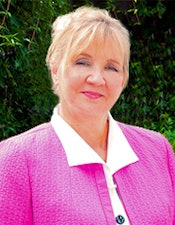
Improving revenue cycle management and practice processes is easier than many dental practice owners realize. To do so, the business side of the practice needs to be given the correct amount of attention, planning, staff training, and process automation.
 Lindy Benton is the CEO and president of Vyne.
Lindy Benton is the CEO and president of Vyne.While maintaining your position as a leading dental practice or positioning your practice for a refreshed or improved brand requires some heavy lifting, you can follow simple tactics to improve your practice overall.
Improving your dental practice processes takes more than just increasing your revenue. When analyzing how you can drive your practice forward, more than dollars and cents are required, but some revenue growth low-hanging fruit can easily be snatched along the way.
Besides simply finding ways to make more money for your practice, spending also might be required to take you where you envision going.
1. Growing revenue
According to a 2016 Citizens Bank report, 80% of practices report they are being restricted by claims processing and insurance reimbursements. The average practice spends nearly $11 per paper claim attachment submitted, including labor, supplies, and mailing.
Solutions exist that can help you save a good deal of money per attachment, saving a practice thousands over the course of a year. For example, if an electronic claims attachment solution were employed (versus paper), a typical practice can save about $10 per attachment during the claim adjudication process. Just by using secure electronic claims attachments, the average practice could save more than $20,000 per year on that one single junction.
2. Reduce the amount of paper
In that same vein, an electronic claims attachment solution also helps reduce the amount of office paperwork. Technology doesn't eliminate paper but does help reduce it and its associated expenses, and it also improves data storage, retrieval, and sorting of information.
“Solutions exist that can help you save a good deal of money per attachment, saving a practice thousands over the course of a year.”
For some specificity, a conventional dental office uses an average of 10,000 sheets of paper every year just to populate paper charts -- not including the file folders themselves. Printing billing or "walk-out" statements for patients generates an average of 50 sheets of paper a day, or another 10,000 pieces of paper each year.
While paper will not be eliminated from a practice, technology can defray some of the costs. Using the above example of a claims attachment technology, these solutions can eliminate paper from the claim attachment process so there are no faxes, no copies of x-rays, and no printing and mailing of explanation of benefits (EOBs) or narratives.
3. Utilize staff more efficiently to drive new patient acquisition
Practice leaders should consider putting their computers to work doing repetitive tasks and freeing their staff up for other ones. For example, consider automating claims eligibility verification. Replace manual claim attachment processes with electronic software tools, and eliminate the need to track down attachments with multiple phone calls and the time required for locating, printing, and mailing x-rays, periodontal charts, EOBs, and more, as mentioned above.
Next, set up automated processes for managing reminders. Use software programs to send out a series of email reminders automatically at three, six, and 12 months overdue. Doing so requires little or no staff time, maintains hygiene production, and helps to ensure better periodontal health for patients -- a win for everyone.
Additionally, by putting your computers to work doing repetitive tasks, you can automate claims eligibility verification and replace manual claim attachment processes with electronic software tools.
4. Keep the dentists informed
Encourage your team to seek out solutions to the challenges facing your practice -- such as old manual processes that are bogging your staff down -- and encourage them to be proactive in addressing them. They should gather their facts, cite examples of others who have implemented the solutions being proposed, and get their point across clearly.
Proposing solutions showing cost savings that are based on facts will save the practice time and money and also increase the odds of changing old processes.
Thus, by streamlining processes in the practice, you will increase administrative productivity, making it easier to communicate. So, in the example above, when using electronic claims and attachments, you are reducing the wait time on the reimbursement cycle. This allows you to keep your accounts receivables lower each month.
5. Eligibility verification, staff structure, and more
Eligibility verification transactions offer the greatest opportunity to reduce cost on a per-transaction basis for the industry as a whole. We've found that the cost for each eligibility verification could be reduced from $6.83 (manual transaction cost) to $0.22 (electronic transaction cost). Using electronic eligibility decreases the phone calls your practice is making to payors, and streamlining through an electronic process allows you to get paid sooner.
You can take other steps to improve the revenue of your practice and its operations. Examining your staff structure is one step.. Are some team members possibly doing more while others are doing far less? Are you able to guide them all effectively? You can evaluate staff, make changes to your organizational structure if needed, eliminate or create staff positions, or simply reallocate some tasks.
And if that is not an option, consider training or providing education to your staff, both formal and informal. Help your employees be the best they can be in their respective roles. Don't assume everyone is on the same page, even if no one is asking questions or complaining. Help them understand policies and procedures. Do they understand how systems and technology work, patient communications, and even the culture of the practice?
Next, as any successful business owner can suggest, try to find ways to trim your expenses. Review your budget, and attempt to find ways to decrease your overhead. Keep underused supplies from being reordered, and ask your service providers to compete on price.
Once you've examined your dental practice budget, think about where your overhead could be decreased. Do you order supplies that go unused? Are there suppliers with better pricing or service that you could try? When was the last time you called your internet service provider or phone provider to see if they have any better deals available? What about insurance policies and rates for your rent or mortgage?
Finally, even in established or successful practices, dentists must continue to plan for their success, develop a plan, and set goals. As markets and patients continue to change, so will the practice and its plan. Like any successful plan, it must help you define who you'll serve, what your brand will be, the offerings you'll provide now, and if you might try to advance into new areas in the future or as required.
In the face of great financial pressures and increasing competition, dentists must continue to find ways to innovate their approaches to maintain their success and growth trajectories. Doctors can continue to invigorate their practices and their teams with strategic planning, proper systems and automation, and staff training. These approaches lead to growth, help you connect you with your patients, and help you serve them better.
With these steps, you'll be able to set goals, build up your practice, and make changes for the business.
Lindy Benton is CEO and president of Vyne, a provider of secure healthcare communications, electronic attachment, and health information exchange solutions for hospitals and dental practices.
The comments and observations expressed herein do not necessarily reflect the opinions of DrBicuspid.com, nor should they be construed as an endorsement or admonishment of any particular idea, vendor, or organization.



















